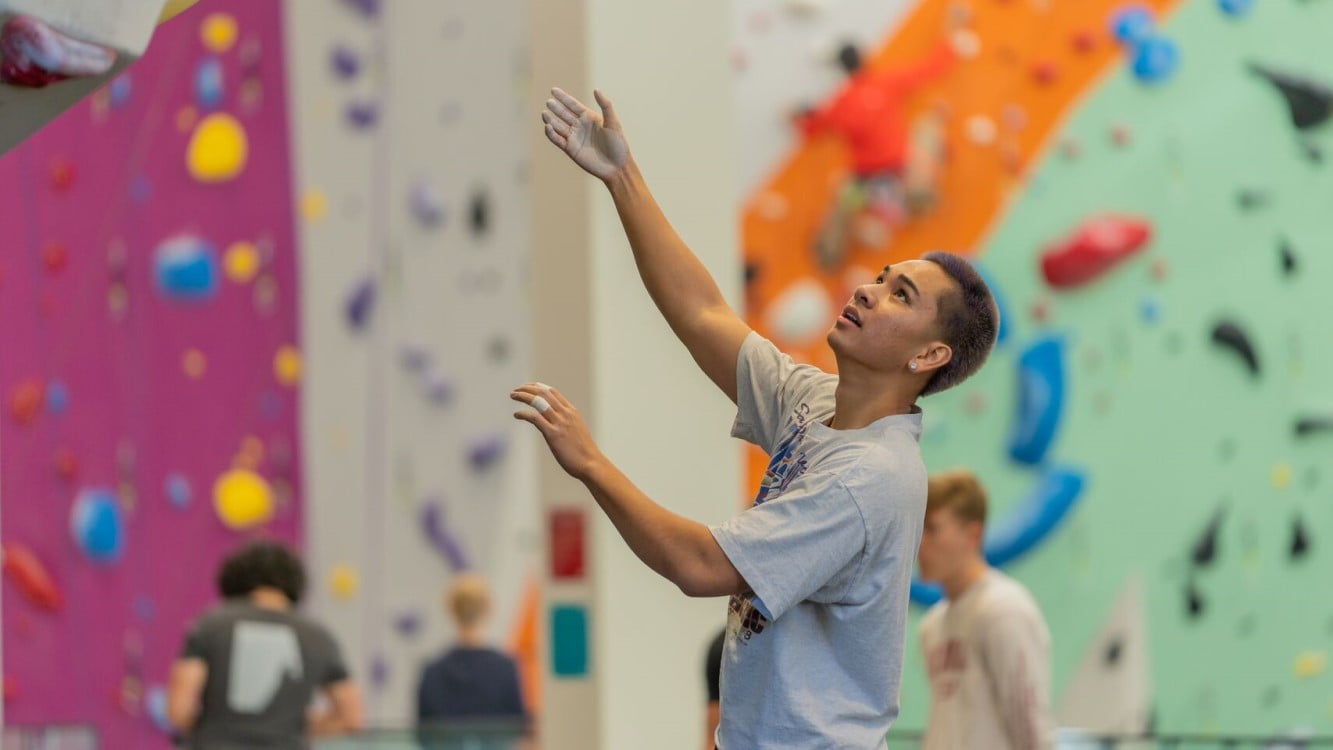Set the right climbing goal to crush this year and beyond
We get a lot of questions about how to climb better and because we are so stoked to see you succeed, we’ve asked our trainers, coaches, and instructors at Movement locations all over the country to provide as much training, technique, and fitness advice to help you achieve your goals.
But what is a good goal? Who are climbing goals for—are those only for those who’ve been climbing for a while? How do you make a good goal?
In all parts of life goals can give us a clearer path toward the outcomes we desire. In climbing, goals can help you focus and approach your gym sessions with more intention. You’ll make the most of your time at the gym while on your way to crushing your objective, whether it’s to climb one route at a certain grade, feel comfortable climbing most routes at a certain grade, send a certain route, you get the idea.
So instead of more general climbing tips and tricks, let’s take a step back and look into how to craft a climbing goal made specifically for you by you.
Differentiate between different types of goals
First, it’s helpful to organize your goals in three categories:
- Long-Term Goals: A long-term goal is your shooting-for-the-moon, pie-in-the-sky goal. What kind of routes do you hope to be climbing in the next 3, 5 or 10 years? Knowing the answer to this question will drive your motivation for training, both mentally and physically.
- Short-Term Goals: The time frame for this type of goal is 3-6 months and should be difficult, but achievable.
- Same-Day Goals: When you walk through the gym doors, what is your goal for that session? Having a plan and being intentional with your time when you pull your shoes on will build a foundation that will help you break through your short-term and then your long-term goals.
Set your own climbing goals
What is your long-term goal? From there, can you identify some short-term goals that will get you to your long-term goal?
Okay, now write them down--when we write out goals, they become more real. They help us to visually embrace what we want and enable us to provide some metrics to the progress that we make along the way.
For your long-term goal, plan out a few attributes that need to be met for them to meet their goal. For example: If your goal is to climb 5.11a, some attributes that need to be met in order for you to achieve that goal could be:
- climbing at least two to three times per week
- feeling generally comfortable climbing in the 5.10c/d range.
- working on precise footwork and improving technique
- feeling comfortable climbing on a variety of climbing holds
These will likely turn into your short-term goals. Remember, these are goals that are achievable in 3-6 months and they should be difficult, but achievable.
So what does this mean for your day-to-day or weekly goals? Further break down your short-term goals into actionable daily and weekly items.
If you have 3 climbing sessions a week, maybe one workout could be a try-hard session where you climb less routes, but choose ones that are a higher difficulty. Your next session could be devoted to a short 4x4 bouldering workout to build power endurance.
Finally, your third could be a more casual, fun session full of more routes that are an easier difficulty. You could even throw in a yoga or fitness class to build strength, flexibility, or mobility to help your climbing. Head to our website and choose your gym's location to find the calendar for upcoming yoga and fitness classes near you.
Want more guidance on creating climbing goals? We've got climbing coaches you can work with. They'll help you hone your climbing goals and then create a personalized climbing training plan to get you to success.
You can also look out for an Intro to Training class near you. Simply choose your gym's location to find the climbing class calendar for upcoming Intro to Training classes.

